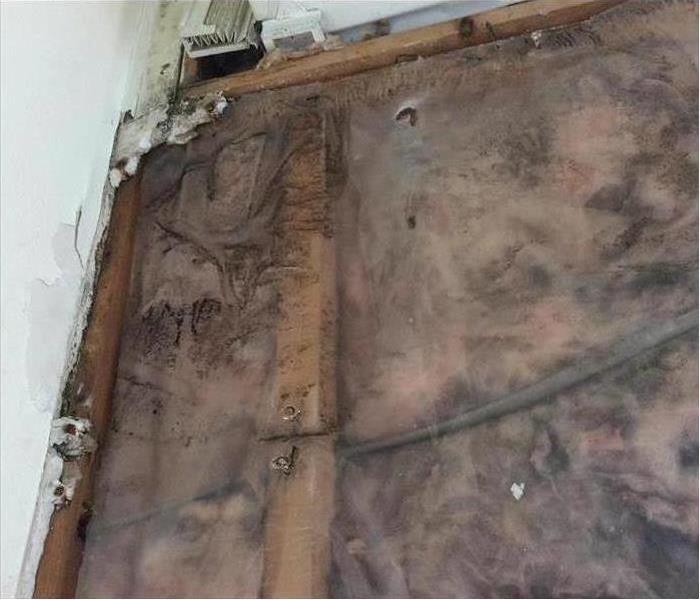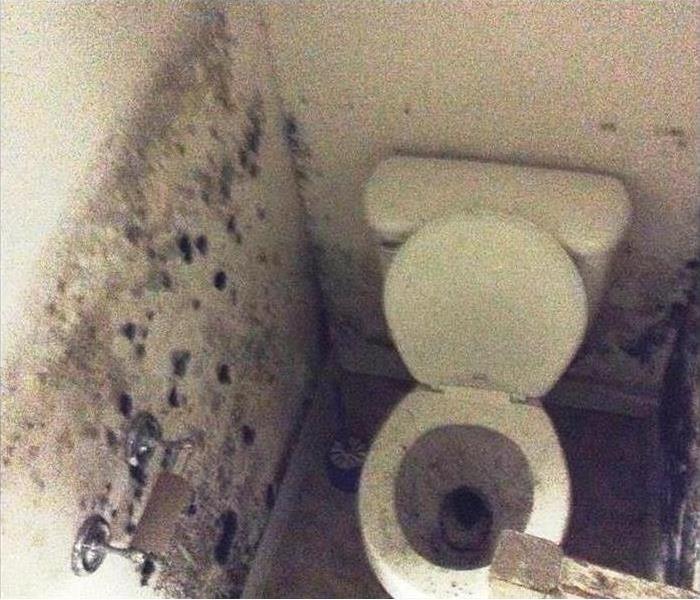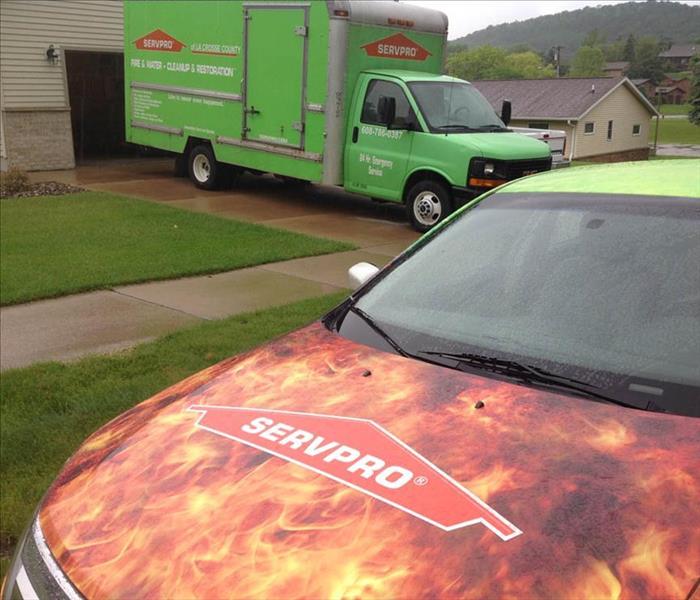Recent Why SERVPRO Posts
5 Common Questions About Mold
8/26/2022 (Permalink)
 Mold damage in New Amsterdam, WI
Mold damage in New Amsterdam, WI
Protect Your Home From Mold Damage
Mold is an extremely common residential issue that many homeowners have to tackle at some point. Putting a stop to spreading mold is a big part of the remediation process, but even that is only the beginning. Read on to learn how to better protect your New Amsterdam, WI, home from mold damage.
1. What Is Mold?
Mold is a living organism. Many people mistake it for a plant or bacteria, but it's actually a member of the fungus kingdom.
2. How Does Mold Spread?
Mold spores are always present in the air around us. Mold itself needs moisture and a source of organic matter in order to actually grow, however. Mold growth occurs when the spores in the air attach to a damp surface or object. After that, it only takes about 24 hours for signs of black mold to appear.
3. How Can You Stop Mold from Spreading?
The first step to putting a stop to spreading mold is to identify the source of the problem. Perform a thorough home inspection to figure out where the moisture is seeping into your home, then resolve the issue.
4. What Are Some Common Mold Causes?
Any number of factors could contribute to your home's mold growth. Water damage, such as leaks or flooding, are common cause. You're also likely to find mold growing in your walls, ceilings or window sills if your home's humidity levels are too high.
5. How Do You Get Rid of Mold?
You can tackle smaller mold issues on your own using a non-toxic, homemade cleaning solution. A simple mixture that consists of equal parts water and white vinegar can work wonders. Larger problems might require mold remediation experts, however.
Spreading mold can quickly take over your home if you don't handle the issue swiftly and effectively. Contact mold remediation experts for assistance with your residential mold issues.
Mold 101
7/20/2022 (Permalink)
 Mold growth in a bathroom
Mold growth in a bathroom
Understanding Mold Growths Cycle
When you start noticing a musty smell, you know your home in Holmen, WI, has been infected with mold. While you can count on black mold remediation and restoration expert to take care of the problem, avoiding mold cleanup is always preferred. While it may not always be avoidable, understanding its growth cycle and taking preventive measures may help reduce the chances of an infestation.
Life Cycle
Mold is everywhere. Luckily, it requires the right conditions to grow in your home. When the temperature is just right, there is excess moisture and plentiful food—organic materials found throughout a home—black mold has the ability to start its growth cycle within 24 to 48 hours. These fungi have four stages in their life cycle:
Hyphae Growth: When ideal conditions come together, so do the mold’s cells. Hyphae are thread-like cells that take in all that nourishment and release enzymes, which is often where the odor comes from. They eventually grow in numbers and become mature mycelium, which is when the mold becomes visible.
Spore Formation: Spores eventually start to grow on the ends of the hyphae.
Spore Dispersal: After they are completely developed, they become airborne. They spread in search of new locations to start the process anew.
Spore Germination: Once they find a new ideal location, they begin to germinate and start the cycle over. Unfortunately, they can remain dormant for extended periods of time.
Prevention Tips
Any kind of moisture problem can bring spores back to life. Below are some tips to keep the right conditions from happening:
- Keep humidity levels below 50%.
- Ensure your home is well-ventilated, especially in the bathroom and kitchen.
- If any leak appears, fix it immediately to minimize water damage.
- Consider using mold-resistance materials when making repairs.
- Items that sustain water damage should be replaced.
While black mold may be lurking in the shadows, it doesn’t have to become a reality. Understanding its life cycle makes it easier to take steps to avoid it.
Outside Resources for Recovering From Catastrophic Loss
2/9/2022 (Permalink)
 From beginning to end, SERVPRO catastrophic loss teams offer vital services for helping communities recover.
From beginning to end, SERVPRO catastrophic loss teams offer vital services for helping communities recover.
Resources For Recovering After A Catastrophic Loss From Outside Sources
Storm-damaged areas often stretch for miles and miles. This makes it difficult for the families and individuals living in the area to get the recovery help they need. When disaster recovery teams are stretched to the limit, the consequences of the storm and the resulting catastrophic loss puts everything else on hold. Fortunately, some companies, such as local La Crosse, WI, SERVPRO franchises, have adapted their plans to provide large loss services when new disasters hit.
Professionals Play a Vital Role
A quick response to storm damage and flooding isn't just for preventing further damages. Professional services are necessary for the safety of members of the community:
- Flooded homes may conceal risks of electrocution. Entering water-logged properties requires the right protective clothing and specialized equipment.
- Wet fabrics and upholstery become very heavy and handling the items with adequate preparation could lead to injuries.
- Facing a catastrophic loss can be overwhelming. Trained technicians are prepared with step-by-step plans to prevent further damage and to speed the recovery process.
Franchises Share Resources
Large-scale disasters often require more labor and equipment than local franchises have on hand. Part of the plan to deal with these situations is a cooperative network. SERVPRO professionals from other communities and specialized equipment from remote locations are available. When the need arises, these resources are mobilized into affected areas. In the past few years, these teams have responded to wildfires, hurricanes, polar vortexes, and major floods.
Bringing Resolution to Communities
After storms clear out and the water recedes, La Crosse, WI, residents may be able to return to their homes. With SERVPRO professionals on hand, communities can begin the work of cleaning up and restoring their lives. In addition to cleaning properties, the technicians work to put mold growth on hold and provide remediation to prevent further spread of mildew. From beginning to end, SERVPRO catastrophic loss teams offer vital services for helping communities recover.






 24/7 Emergency Service
24/7 Emergency Service


